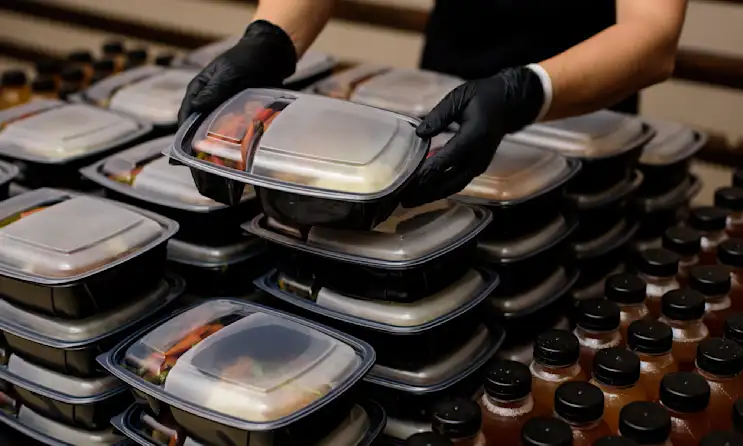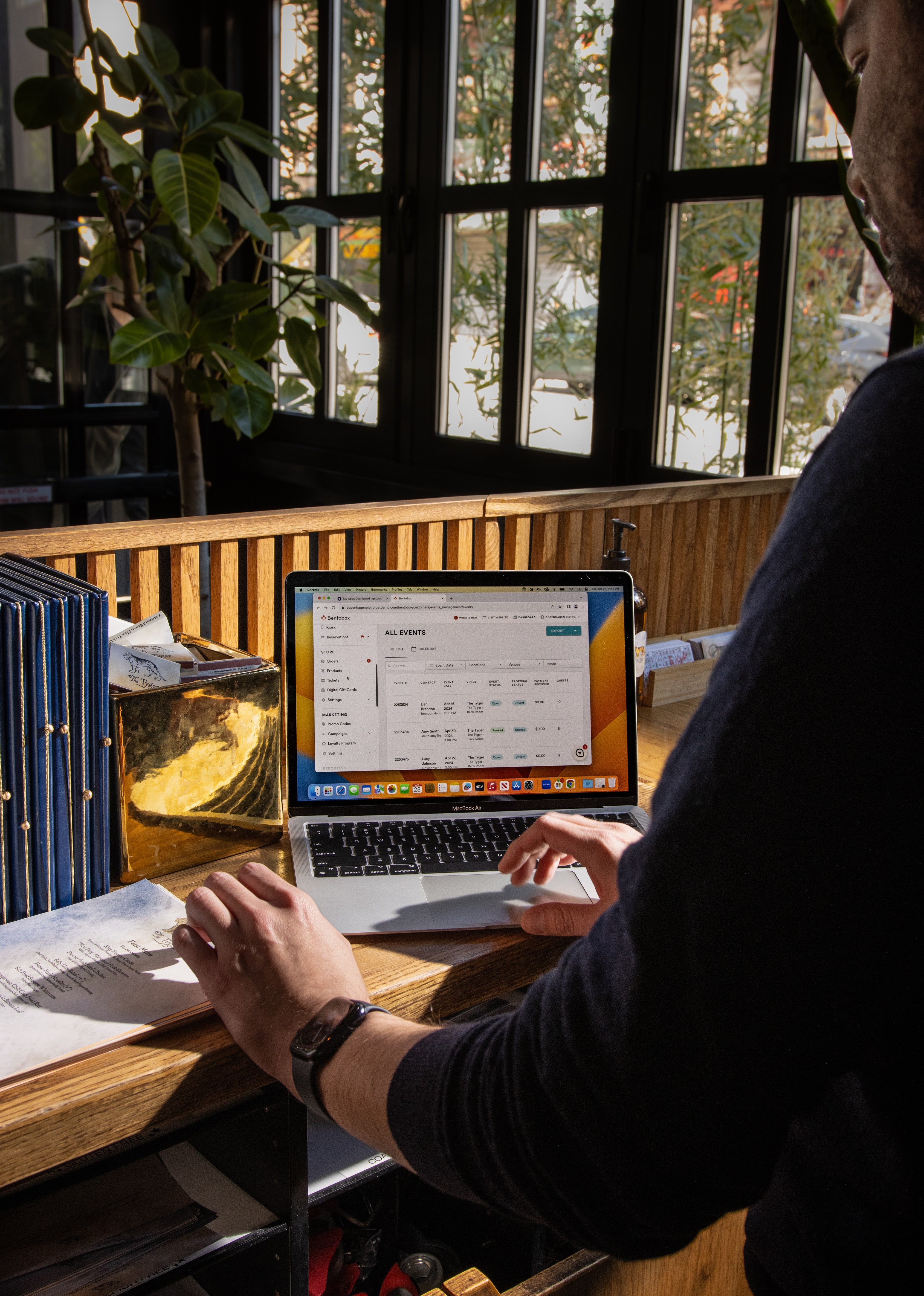Commerce
4 Tips to Improve Food Delivery Packaging
You pay attention to how you plate food on-premise. Here’s how to apply the same mindset to takeout packaging.
There’s a lot of thought that goes into the silverware, plates, glasses, and design in the dining room, but not nearly as much energy goes into the delivery experience. One of the most important (yet sorely overlooked) elements of delivery is the packaging used to transport food.
Packaging is much more than a means to an end. It’s a safety tool to keep food sealed until it gets to the customer. It’s also a marketing opportunity, a temperature controller, and a chance to innovate. Here are a few ways to make the most out of your food delivery packaging to impress new and returning customers alike.

PRODUCT
Online Ordering for Restaurants
Drive more revenue with unified, branded, commission-free online ordering.
Ideas for Better Food Delivery Packaging
1. Turn Packaging Into Marketing Material
Customers who get delivery from a third-party app may not have heard of your restaurant until moments before pressing “Place Order.” After standing out from similar concepts on these apps and securing the sale, the last thing you want is for that customer to never press that button again. That’s why you should use your delivery packaging as marketing collateral to cement your brand, earn new followers, and create repeat business. Here are three approaches to try out.
Embellish the Restaurant's Logo
Restaurants can use deliveries to cement their brand on packaging and food wrappers. For example, rather than relying on generic packaging, custom designs like Black Seed’s bagel wrappers add legitimacy to a restaurant as more than just a generic meal provider.
Once an order leaves the door, the restaurant has almost no control over a diner’s experience. These designs, however, give restaurants one more spot to add a signature to their work. A good rule of thumb is to have the restaurant’s logo somewhere on the packaging so that food doesn’t show up in a brown bag and plain white container. If custom packaging isn’t an option, a sticker with the restaurant’s logo sealing the bag or box for delivery will work in a pinch.

Mention Direct Delivery Options
Mention Direct Delivery Options
Delivery apps do help restaurants increase sales, but they come with a roughly 30% commission. Direct online ordering allows you to pocket more revenue from each sale and captures email addresses you can use to re-engage diners.
Read more: The Best Online Ordering System for Restaurants in 2024
Promoting direct options on packaging can drive first-time and repeat customers to place their next order right through your restaurant. For example, if bags and food packages are stamped with a “Get 10% off your first order when you get delivery from OurRestaurant.com,” you could see a shift away from app orders and towards your restaurant’s own online ordering software. This approach was taken by Summer Shack in Boston, which also promoted the revenue-retaining move on Instagram.

Promote Social Media Accounts
Gain more social media followers by printing your Instagram handle on delivery packaging. This grows your social audience and keeps the restaurant fresh on fans’ feeds. Delivery opens the door for direct marketing to these newfound followers — including the chance to promote specials and (as mentioned above) the restaurant’s own online ordering platform.
Boston restaurant Shy Bird does this with a simple “Follow Along @HeyShyBird” on its to-go bags, and it has thousands of followers to prove the effort’s worth. Having big, bolded text clearly laying out the restaurant’s Instagram handle makes the follow sound enticing, especially if the contents of that bag are as delicious as promised.

2. Prioritize Sustainability
Compostable, biodegradable, and sustainable takeout packaging might cost more up-front, but given the massive interest by certain demographics, the effort could win and delight new customers — especially when diners get a delivery and see a recycle symbol on the box.
Read more: 7 Restaurant Sustainability Best Practices to Know
Another option is to provide diners with the choice of getting their food delivered in sustainable packaging for a small upcharge. Since one-third of consumers are willing to spend a premium for sustainability, this route provides an affordable way for restaurants to appeal to more diners and help the environment.
For information about implementing sustainable packaging, check out the National Restaurant Association’s Plastic Packaging Resource Guide.
3. Maintain Meal Temperature
While food delivery allows customers to enjoy a restaurant-prepared meal without leaving the comfort of their homes, the sacrifice comes in the form of a waiting game.
It can often be up to an hour before food gets to a customer’s front door. Between hot foods and cold foods sharing the same bag (or even the same container) and long waits for food to arrive, temperature drop-offs are a real challenge.
There are two ways to alleviate this issue and preserve meal temperature. First is to wrap foods with different temperatures separately. This might include packaging grilled chicken for a caesar salad in another container than the lettuce and croutons, as well as wrapping the chicken in an aluminum container to help keep its heat.
If foods with different temperatures must go in the same package, this is where the second option of separating foods within the same container comes in. This can be done by adding sub containers to each package — like what Federalist Pig does when separating its warm quesadillas from cooler sauces.

Another choice is to use takeout containers that come with pre-divided compartments. Sturdy and well-divided packages like these allow diners to open up one package instead of several when their delivery arrives, but they also keep items of different temperatures from touching each other in transit.
4. Preserve Food Quality
Preserving food quality during the delivery process is also important. Specifically, diners want their food to travel intact and untouched.
Safety measures like wraps, staples, and stickers provide certainty to customers, who know that when food gets to their address, the last person to touch it was a restaurant professional who handled it with care. These security stickers are an affordable food insurance policy — a roll of 250 customized logos costs as little as $3.
Plus, customers don’t want food to have shifted in its container before it arrives. This is especially true for side sauce containers, which shouldn’t spill in the box or bag. To offer an extra layer of food protection, it’s best to invest in sealable, tamper-proof containers. Webstaurant Store has a section of its website dedicated to containers that offer an extra strong seal for a more successful delivery, as well as sealable drink bags for customers getting beverages delivered.
Making the Most of Food Delivery Packaging
Off-premise dining is here for the long haul. Every restaurant concept is positioned to drive substantial revenue from delivery, but none of that matters if food arrives in shambles or uninspired packaging. Plus, restaurant delivery packaging can help grow the business by earning new followers and showcasing a commitment to sustainability.
These are just a few considerations to keep in mind and help take your delivery packaging from serviceable to exceptional. What might seem like a straightforward solution of paper and cardboard is actually a secret weapon for retaining business and growing revenue down the line.

BentoBox Marketing & Commerce Platform
Deliver Smarter Hospitality
Want to stand out online, bring in more money, engage your diners, and streamline operations?
Recommended

Commerce
The Simple, Effective Way to Sell More Restaurant Gift Cards
December 29, 2020
How to increase your gift card sales with one easy move.

Websites
No, Your Restaurant Doesn’t Need An App
July 10, 2024
Debunking a common myth about online ordering.

Commerce
5 Restaurant Problems an Online Catering Store Solves
September 30, 2021
We built our Online Catering tool to address specific problems we heard from restaurant professionals. Which ones does your restaurant need help with?

